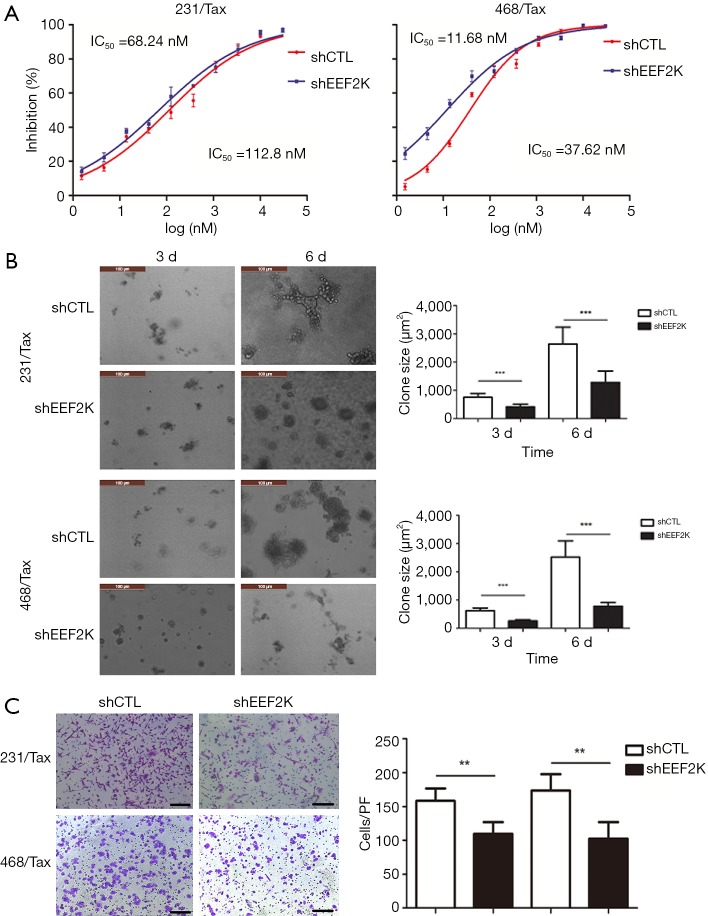Figure 3.
Silencing eEF2K reduces cell viability and invasion. (A) The IC50 of paclitaxel in paclitaxel-resistant TNBC cells with or without eEF2K silencing. The IC50 was 39.5% lower in eEF2K-depleted 231/Tax cells than in control cells (68.24 vs. 112.8 nM, P<0.001) and was 68.5% lower in eEF2K-depleted 468/Tax cells than in control cells (11.86 vs. 37.62 nM, P<0.001); (B) spheroid formation of TNBC cells in the 3D culture system. The cells were incubated for 6 days and photographed on days 3 and 6 (scale bar: 100 µm). Colony size was measured as the average area of a single spheroid. The data are presented as the mean ± SD of three independent experiments, and the results were analyzed using Student’s t-test (***, P<0.001). The formation of tumor clones of eEF2K-depleted chemoresistant cells was suppressed at 3 and 6 days; (C) Transwell assays of paclitaxel-resistant TNBC cells (scale bar: 200 µm). These results suggest that silencing eEF2K significantly suppresses the invasive potential of chemoresistant TNBC cells. Data are presented as the mean number of cells/field from three independent experiments, and the results were analyzed using Student’s t-test (**, P<0.01). eEF2K, eukaryotic elongation factor 2 kinase; PF, power field; TNBC, triple-negative breast cancer; SD, standard deviation.

